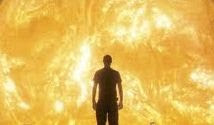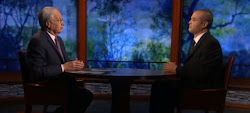http://www.cosmosmagazine.com/node/3302/full
Be Well.
David

A thunderstorm over Sydney, Australia.
The gathering storms
Cosmos Online
City dwellers of the future will experience more violent thunderstorms more often. And Mother Nature has nothing to do with it: our built environment is manufacturing its own weather.
As you sink a bogey putt on the first hole, the sun is intense and the air is close and sticky. The forecast is for thunderstorms later; the sooner you finish this round of golf the better.
Back in the clubhouse, you notice a shroud of high cloud has blocked out the Sun and on the horizon you see a dark, ominous mass of cloud over the city, almost certainly a thunderstorm. The wind has picked up too. Golfers begin to stream in from the course as the cloud thickens and a few large drops of rain hit the clubhouse windows.
Then the heavens open. Heavy rain floods the car park. There's a flash of lightning and five seconds later the thunder arrives. "About a mile away," you think, remembering the calculation your grandfather taught you.
That's when the hail starts. Golf ball sized chunks of ice begin to blanket the course, collecting several birdies and a few holes in one.
And in less than an hour it's all over.
You've just experienced a severe thunderstorm, which released more than 1015joules of pent up energy. An equivalent amount of electricity could power all of the U.S. for about five hours.
The National Severe Storms Laboratory (NSSL) run by NOAA in the U.S. estimates that at any given moment there are 2,000 thunderstorms in progress around the world.
When a thunderstorm contains tornados, hail over 18mm in diameter or winds faster than 90 km/h, it's classed as severe by the NSSL. Severe thunderstorms kill more than 100 people each year and are responsible for over two billion dollars of property and crop damage in the U.S. each year.
The infrastructure and activity in our cities is affecting the weather around us: the concrete and asphalt heat up the ground relative to the countryside; the buildings obstruct airflow; and, depending on the exact conditions, the particles in pollution can enhance or delay weather events. Even short term activities such as traffic jams can have an effect.
What's more, cities are set to explode, with the U.N. predicting the number of city dwellers will almost double to 6.4 billion by 2050, and changes in global climate are going to lead to stronger thunderstorms in regions that are already affected.
Though they seem unpredictable, there is a simple recipe for thunderstorms. According to the NSSL, you need a large temperature difference between the ground temperature and temperatures higher up in the atmosphere for a updraft of air, humid air at the Earth's surface and a trigger.
Humidity provides the energy for the thunderstorm. When water vapour in a rising air mass cools and condenses, huge amounts of heat energy are released, expanding the air and resulting in large buoyant forces and vigorous updrafts high into the atmosphere.
And finally, a trigger gives an upward push to the air to encourage the initial condensation. This could be anything that forces air to rise, such as a line of hills or the arrival of a cold front.
Once this recipe is in place, the intensity of thunderstorms is influenced by the variation of wind with height, or 'wind shear', which dictates whether rain falls straight down back through the thunderstorm and disrupts it, and also by microscopic particles of dust and debris in the atmosphere, called aerosols, which cloud droplets form around.
Our urban landscape in changing and experimenting with all these factors, and it's having an effect. Back in the 1970s, the Metropolitan Meteorological Experiment in St Louis, Missouri found that the urban environment was found to be responsible for 45% more thunder, 83% more lightning and rainfall increases of between 5 and 25% immediately downwind of the city. There were also more hail days and greater hail intensity.
Alex Ntelekos, a hydro-meteorologist who works in thunderstorm risk assessment with insurance broker Willis in London, says there are three main ways that our cities alter thunderstorm dynamics.
The first of these is the 'urban heat island' effect (UHI). The concrete and asphalt in urban areas heat up faster during the day than forests or grasslands, and using energy also releases heat.
This leads to a ground temperature difference of up to three degrees Celsius compared to the surrounding countryside, Ntelekos says.
But temperatures higher up in the atmosphere are unaffected - the large temperature difference means that air is more buoyant than the air above it and will rise in an 'updraft' until it reaches air of the same density. This can be enough to trigger rain or thunderstorms that wouldn't have otherwise occurred.
"Approaching air masses will be warmed and lifted when they come close to the city," explains Ntelekos. "The air gets saturated and you can get more rain."
Another influence on thunderstorms is the buildings and infrastructure, or 'urban canopy layer', which alters the surface wind flow.
Wind flowing over a city encounters obstruction at ground level as it moves over and around buildings, which slows its progress. But more air continues to arrive, and has a damming effect.
This forces some of the air to rise over the obstruction, the same way that water flows over rocks in a stream. If the air is humid enough and condensation occurs, then this can also trigger a thunderstorm that otherwise might not have occurred.
Ntelekos has analysed a severe weather event over Baltimore, Maryland, in 2004, which broke records for observed lightning and rainfall. Over several hours thunderstorms sprang up as unstable, humid air reached the city.
Baltimore experienced about 30% more rainfall than the region would have experienced had there been no buildings where the city now sits, according to Ntelekos.
Pollution also affects thunderstorms, though this effect is the most complicated and least understood, according to Ntelekos. Pollution can either enhance or suppress activity, says Daniel Rosenfeld, a cloud physicist at the Hebrew University of Jerusalem.
If aerosol concentrations are higher then a larger number of smaller cloud droplets form. These smaller droplets take longer to coalesce into raindrops, which delays the onset of rain, but it can also extend the lifetime of the storm. In some cases, the longer lifetime leads to the transport of more liquid water high into the cloud, where it freezes, releasing additional heat and further invigorating the thunderstorm, says Rosenfeld.
Ntelekos's simulations of afternoon peak hour thunderstorms over New York City have shown that pollution can both enhance and suppress by pollution.
"Based on modelling results we saw cases where we had 30 to 40% enhancement in rainfall due to increased pollution levels when atmospheric conditions were favourable," says Ntelekos. But if any ingredient for a thunderstorm is low, then pollution weakens a storm and suppressed rainfall.
This complicated pollution effect depends on wind shear, according to Jiwen Fan, a meteorologist with the Pacific Northwest Laboratory in Richland, Washington, who has modelled the effect of aerosols on isolated afternoon thunderstorms in northeast Australia and Eastern China.
Referred to as "afternoon showers", these storms form in relatively homogenous air masses, away from the influence of complicated weather features such as cold fronts.
If humidity is over 100%, then condensation will occur on aerosols, releasing energy in the process. But if humidity is under 100%, evaporation will occur, which absorbs energy and weakens storms.
If wind shear is weak, then more aerosols lead to an increase in both condensation and evaporation within the storm, but the rate of condensation increases quicker, leading to greater energy release and stronger storms.
Models show that this effect is observed until an optimum level of aerosols is reached, after which evaporation increased more quickly than condensation and storms become weaker.
On the other hand, strong wind shear ventilates clouds with drier air, which lowers the humidity, slowing the rate of condensation and the release of energy. In these cases, increasing the concentration of aerosols weakened thunderstorm strength.
Humanity's effect on the weather is not confined to the spaces above cities. As climate change occurs, thunderstorms over land will get stronger wherever they occur now, says Tony Del Genio, a climate modeller at NASA's Goddard Institute for Space Science in Maryland.
Over the oceans, conditions at the ground and up in the atmosphere will warm at about the same rate, so instability and storm strength are not expected to increase, he says.
But the land surface is predicted to warm more than the ocean surface, while the temperature of the atmosphere is expected to be similar over the land and the ocean. So temperatures differences over land will be greater, which is conducive to stronger storms.
However, many places may also become drier, lacking the humidity to fuel thunderstorms.
"We don't necessarily think there will be more thunderstorms in a warmer climate," says Del Genio. "[But] when humid air finally comes in from some other location, things are set to really explode."
Del Genio says the most affected areas will include Central Africa, the Amazon basin, the U.S., South East Asia, northern Australia and Central America.
Balancing the fact that there will be greater temperature differences above cities is that less wind shear is expected in warmer climates, according to meteorologist Jeff Trapp, from the University of Purdue in Indiana,
Wind shear prolongs the storm's lifetime by stopping rain falling back through the storm's updraft. But the increase in available energy will outweigh the reduction in wind shear, says Trapp. A warmer climate will see an increase in the number of days where conditions are ripe for severe thunderstorm development.
Trapp's research has concentrated on the U.S., where models predict these effects will be concentrated around the densely populated areas of the Gulf of Mexico and the Atlantic coast.
As cities grow and climate warms there is strong evidence that areas already prone to thunderstorms will see bigger, stronger storms, leading to greater property losses.





No comments:
Post a Comment